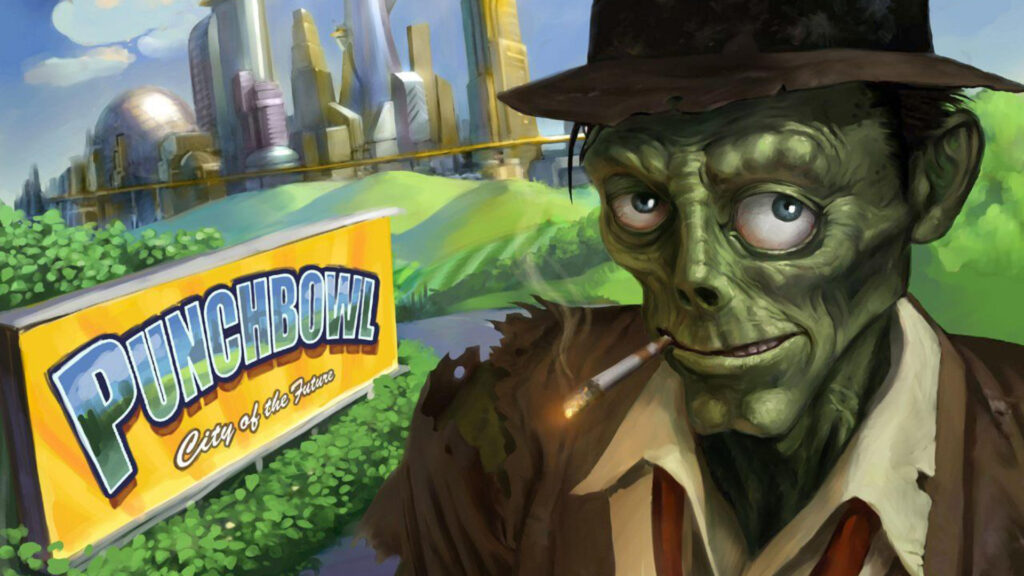
Stubbs the Zombie in Rebel Without a Pulse was a game made in a time when developers had much more creative freedom than they do today. During the 2000s, there were all kinds of high concept 3D action games that mixed things up, and it was not uncommon where the player could assume the role of a monster or some kind of non-human character.
Considering how much flexibility and possibilities there are that playing as a monster offers, one would think there would be more games where the player assumes that role. Titles like Destroy All Humans!, War of the Monsters and Oddworld: Stranger’s Wrath are examples of how limited playing as a human could be.
For decades, the zombie has been either a punching bag or fodder for players in all kinds of games. This time, we are the zombie in Stubbs the Zombie in Rebel Without a Pulse. As it turns out, being undead has a lot of advantages, and this latest remaster allows gamers to see all the gory details.
Stubbs the Zombie in Rebel Without a Pulse
Developer: Wideload Games/Aspyr
Publisher: Aspyr
Platforms: Microsoft Windows, Mac, Nintendo Switch, PlayStation 4, Xbox, Xbox One (reviewed via Xbox Series S backward compatibility)
Release Date: March 16, 2021
Players: 1-2
Price: $19.99 USD
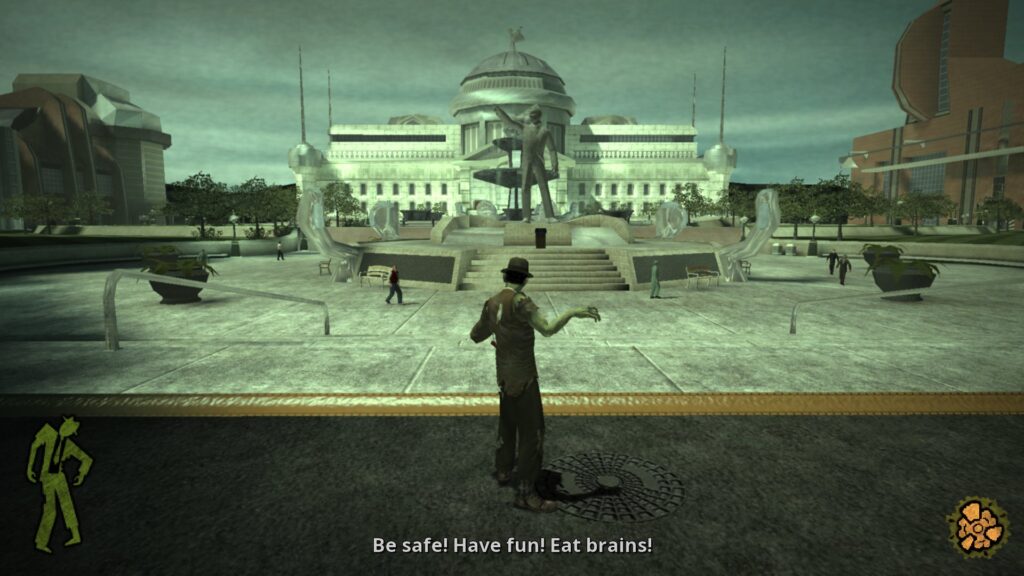
Stubbs The Zombie is a game that could not be made today. This has nothing to do with the fact that the humor is deliciously peppered with crass and politically incorrect sight gags, or the jabs at both political leanings. The gameplay is laser focused with not a single molecule of fat on it.
Most 3D action games would have multiple objectives, collectibles, an upgrade system, or a cinematic presentation to make the experience feel like a movie. Other times, the gameplay might have a morality system or the level design might be open world or structured like a Metroidvania. Stubbs The Zombie rejects all of this and strives for simplicity.
Outside of a few gimmicky set pieces, the only thing the title zombie can do is kill humans, and turn them into zombie followers. There is not too many ways Stubbs can go about doing this, and even though it can get a bit tedious at times, there is nothing quite like being a zombie.
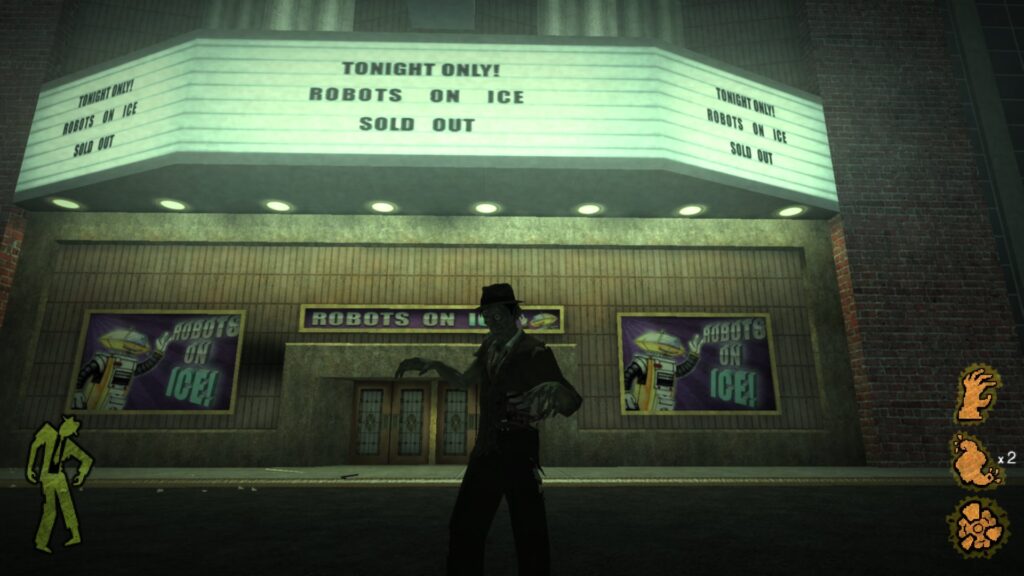
Despite being a shambling corpse with his guts hanging and flopping around like a naked, skydiving John Holmes falling to Earth taint first; Stubbs is pretty spry. He shuffles quickly, arms forward, and always eager to grasp at his next meal like a purple haired feminist at a Vegas style all-you-can-eat buffet.
On the other hand, jumping is admittedly awkward. Stubbs leaps in an unusual vertical stance that is meant to be a reference to the jiangshi- the Chinese jumping vampire. Thankfully, there is almost no platforming of any kind, and jumping is mostly used for evasive maneuvers or for getting around obstacles.
When Stubbs the Zombie first came out, it was openly advertised for using Halo‘s game engine. This becomes evident within seconds to anybody who played the original Halo on Xbox. The graphics engine and even several of the game’s mechanics make Stubbs the Zombie feel like a mod at time.
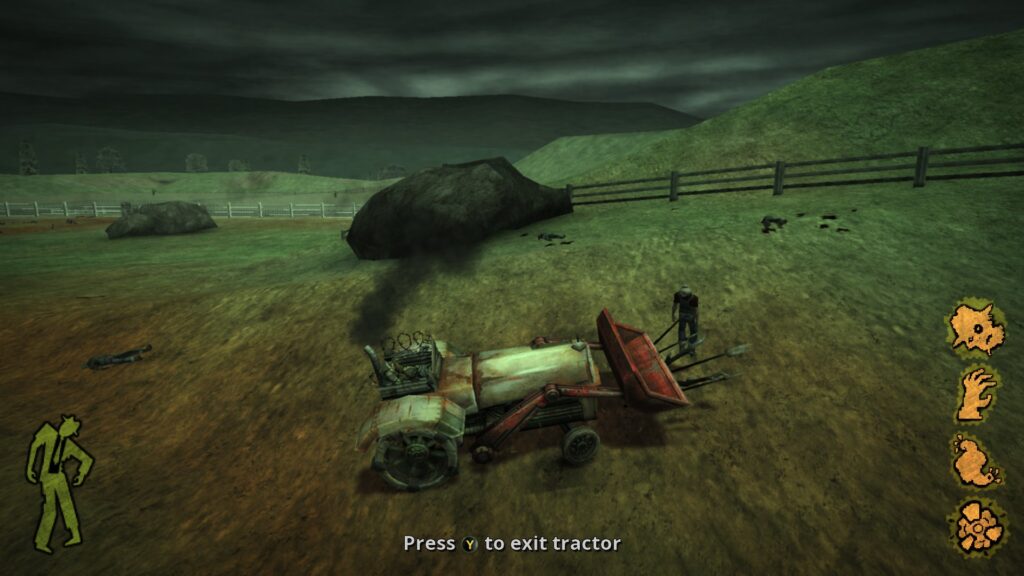
The tractor or the hover cars have the same exact controls, handling, and physics as Halo‘s warthog and ghost vehicles. Squinting while playing might even fool veterans into thinking that this was some kind of DLC expansion to Combat Evolved.
The overlap of Halo‘s engine and Stubbs pays off, because the foundation to this game engine was already extremely solid. The environments in both games were vast and expansive, which offered many situations where the player was free to improvise a retreat or to flank some sentries from other angles.
Stubbs may not be able to carry an assault rifle like Master Chief, but his abilities are varied enough to work in any situation the game throws at the player. Stubbs’ classic beef queef chokes surrounding threats, and leaves them wide open to get their arm ripped off so that they can enjoy a friendly game of “quit hitting yourself.” It may be a juvenile joke, but it is comforting to see in this day and age.
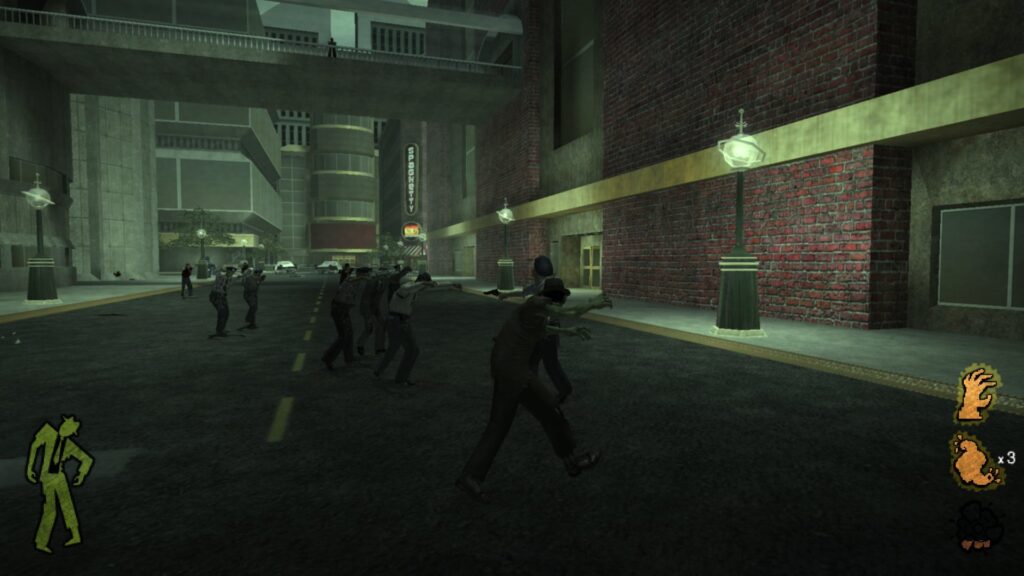
Other abilities in Stubbs’ repertoire is his pancreas, which functions like a manually detonating grenade. It is one of the more useful tools available due to the range Stubbs can throw it, and because any poor devil who dies from this will always turn into a zombie.
The separating hand trick is always a lot of fun, because playing as a disembodied hand that can climb on all surfaces has many uses. This is a very effective scouting measure, and has the bonus of being able to possess any enemy. This becomes very important in later levels where U.S. soldiers become common, and using their machine guns against them in the best strategy to level the playing field.
Gunplay across all human hosts are polished and balanced to make up for the fact that most of the time that Stubbs will have to hobble his way towards armed humans. Playing as a possessed armed human will certainly remind Halo fans of the feel of some of the classic energy based weapons, or the distinct firing handling of the rifle or machine gun.
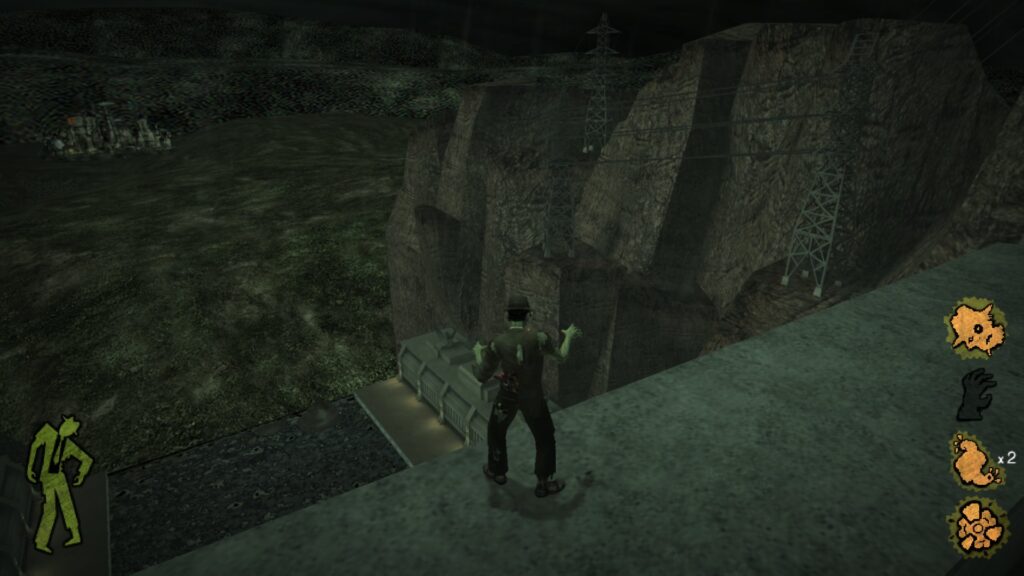
Stubbs’ greatest attack is his own head, which he detaches and hurls like a bowling ball. Controlling the head is possible but very difficult, given the absurd velocity that it is rolling. Even if you are not able to score a strike, the head can be detonated and cause significant splash damage, annihilating anyone caught in the blast and making their insides stain the streets.
Most stages are large and complex maps with the simple goal of making it to the end. The theming for every level will vary, and might introduce a gimmick to keep the constant brain-eating from getting stale. Sometimes this is done by introducing a vehicle to drive, or some areas will have some switches that need to be hit.
One of the more challenging stages will task Stubbs with carpooling some zombies to large electrical conductors so they can complete the current. This is tricky because there are multiple pylons that need meat, and there are a steady stream of armed scientists and jet pack equipped barbershop singers who will do anything to end Stubbs’ reign of terror.
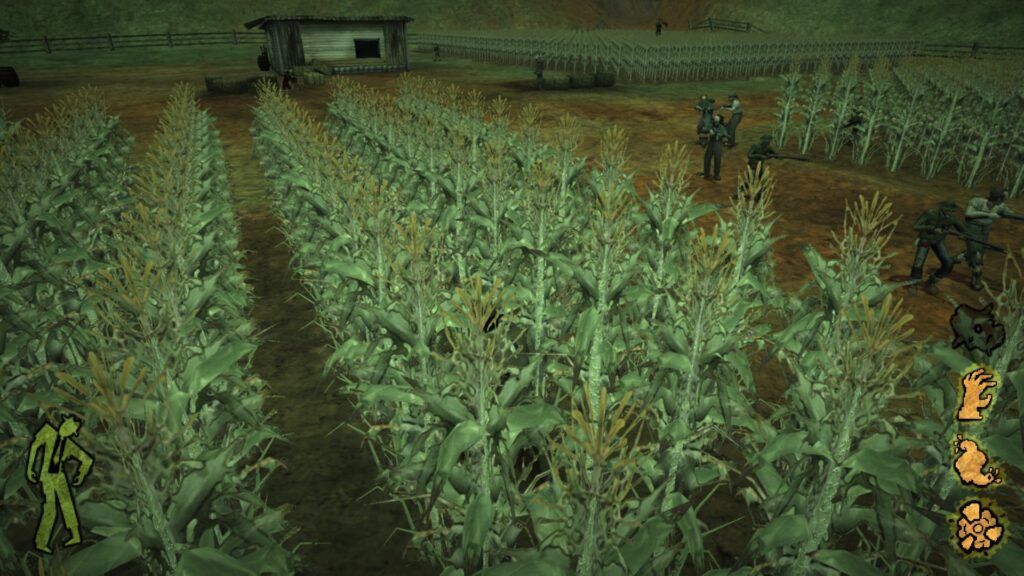
Stubbs the Zombie‘s highest point involves having to contaminate the city of Punchbowl’s water supply by draining the undead lizard. Stubbs will be flanked by all sides and players will have to manage keeping their zombie ranks filled to act as cover while finding time to urinate in a huge water tank. There truly is never a dull moment in this game.
The story is an excuse to have such high concept gameplay. This does not mean that the developers did not bother to fill in the gaps to make some needed context for the action. Considering the sense of humor in the cutscenes and the overall tone, it always feels like the people who worked on this were always having a lot of fun.
Punchbowl, Pennsylvania is the city of the future; and it was built upon the grave of the lowly salesman, Edward Stubberfield. In life, Ed “Stubbs” Stubberfield was a nobody, and is revealed to be the illegitimate father of the city’s founder.
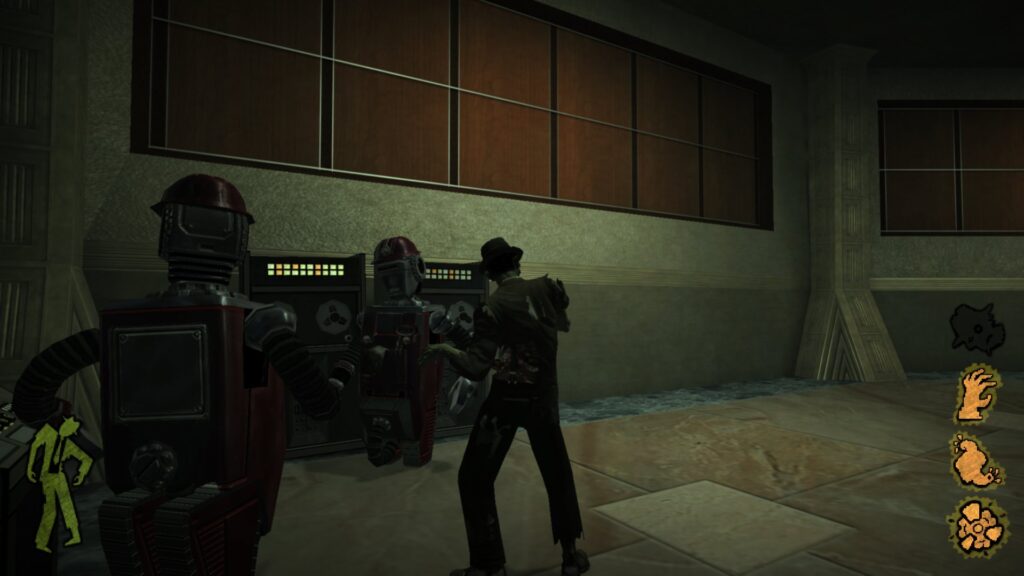
In his undeath, Stubbs would get revenge by turning so many citizens into zombies that he would flip Punchbowl into a blue city. Every officer, scientist, soldier and every day Joe and Jill becomes fodder to overwhelm the opposition. It can feel a lot like being a virus that is spreading and infecting, gradually taking over the city.
Having a large enough pool of fodder zombies is crucial to Stubbs’ campaign, because while he may be a quick shuffling zombie with slow regeneration, he is still an easy target for long ranged hillbillies. Having a horde of undead act as a barrier and distraction for the enemy AI is largely the best strategy to overcome all odds, but it is also a bit tricky since this was a game coded in 2005.
Stubbs is able to whistle to his army to get them to follow, but since these are brainless zombies in a 2005 game, their pathfinding is not ideal. Sometimes a few won’t respond, and other times they will get caught on geometry. While this might be unintentionally realistic for shambling reanimated corpses, it does make for frustrating situations when it is necessary to organize a strategy.

Stubbs the Zombie‘s worst moments are when it presents boss battles. One of which is a confusingly designed rhythm game which the developers admit to being so poor, that upon failure they give players an option to skip it. The two other bosses are towards the end of the game, which are confusing and poorly telegraphed.
The battle with everyone’s favorite scientist from Operation Paperclip involves him hovering with a jetpack and shooting lasers while protected with a barrier. What makes this confusing is that Stubbs is supposed to hit some switches that makes his barrier disappear and makes the scientist drop in altitude temporarily. Even more confusingly, the battle might suddenly end mid fight.
It is not clear why this happens. Attacking this boss with exploding guts and swiping at him does not provide substantial feedback to suggest damage, and he has no health bar. There needed to be more information given to the player when fighting these climactic battles.
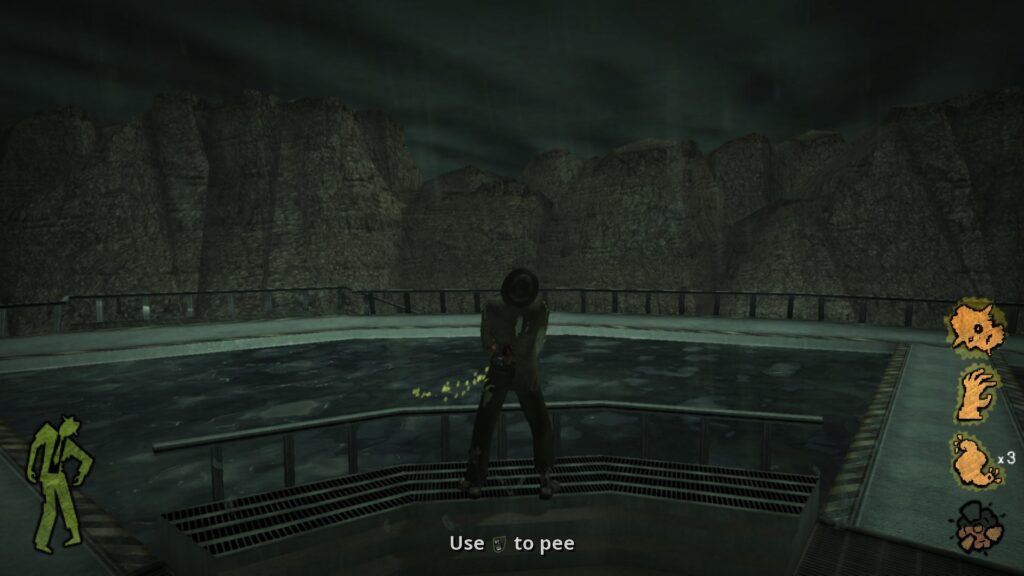
The remastering process for Stubbs the Zombie is a very restrained approach. It can hardly be considered a remaster at all, and is more akin to an enhanced port with some basic upgrades. All visual assets are exactly as they were from 2005, warts and all.
Thankfully, Stubbs the Zombie is a decent looking game from 2005. However, it does show some aspects that don’t hold up too well. Details like the low polygonal hands on every character aside from Stubbs stand out, and the way that cutscenes are hardcoded in letterboxed format which does not translate to 16:9 display.
This result in scenes getting pillarboxed, and end up in an undesirable postage stamp format which shrinks the image to an unusually small size. The huge black borders become distracting throughout the game’s funnier moments.
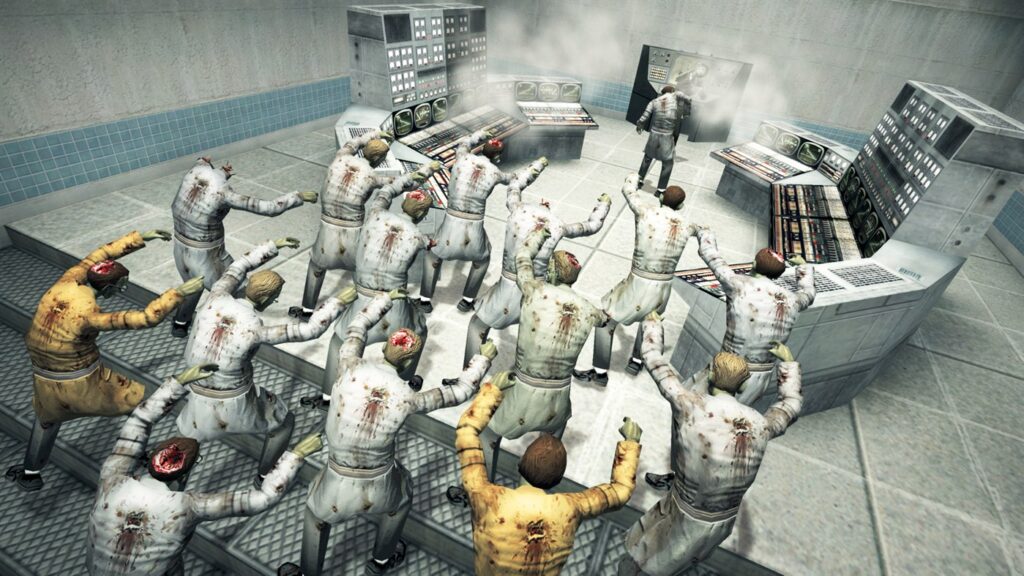
Stubbs the Zombie‘s visuals may be like the undead protagonist it features, but that doesn’t mean it is devoid of some impressive details. Stubbs’ cigarette is noticeably lit, and even has glowing embers that emit some very small smoke effects.
Draw distance is surprisingly far, and the art deco architecture is varied with many materials forming its make-up. Gore effects are detailed, and have wounds spurt impossibly absurd amounts of blood. Humans explode, and their limbs and innards get strewn about for all to see.
The most noticeable enhancements that Stubbs the Zombie receives are the usual suspects: high resolution display, and a 60 frames per second lock. Anyone expecting a massive visual overhaul like in the 2020 remake of Destroy All Humans! will be disappointed.
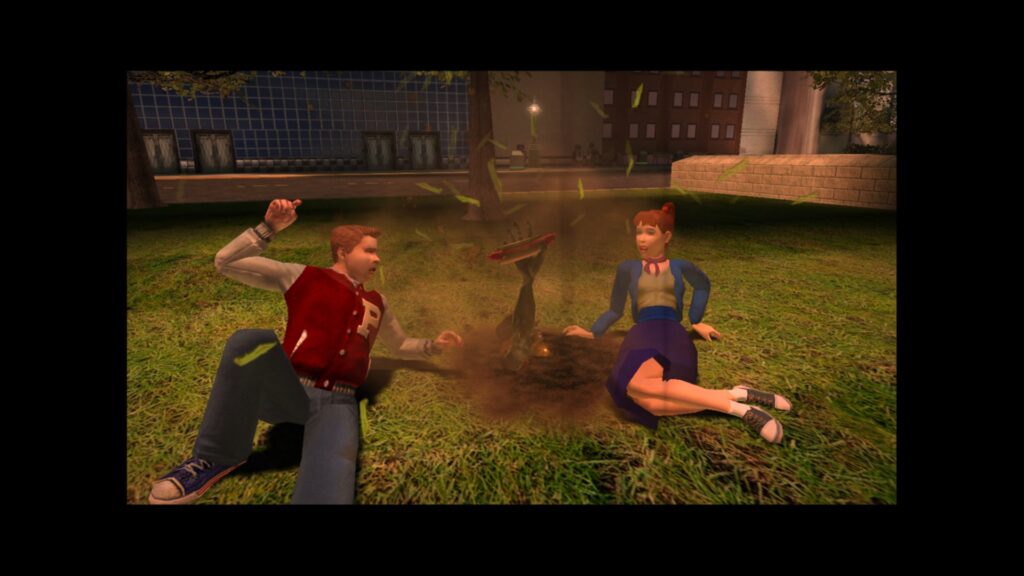
The soundscape of Stubbs the Zombie is weirdly barren, and makes the experience feel like fever dream. The soundtrack was often marketed with punk renditions of classic 50s tunes like Lollipop or Earth Angel. Most of what gamers will hear is the sounds of ripping flesh, screaming, and goofy one-liners from enemies.
It is a strange feeling to be roaming enormous levels, and only the sounds of death, shrieks, gunfire, and moaning zombies can be heard. Once in a while some music will be heard when the severed hand theme plays when using the possession ability. Beyond a few scarce moments of musical cues, there is only the sound of Stubbs’ reign of terror.
Stubbs the Zombie Rebel Without A Pulse Remastered really could have used some extra content. The original game was already considered very light, even by 2005 standards. Playing the local split screen co-op is exactly the same experience as playing alone, and it is a missed opportunity to not increase the amount of players to four or beyond.
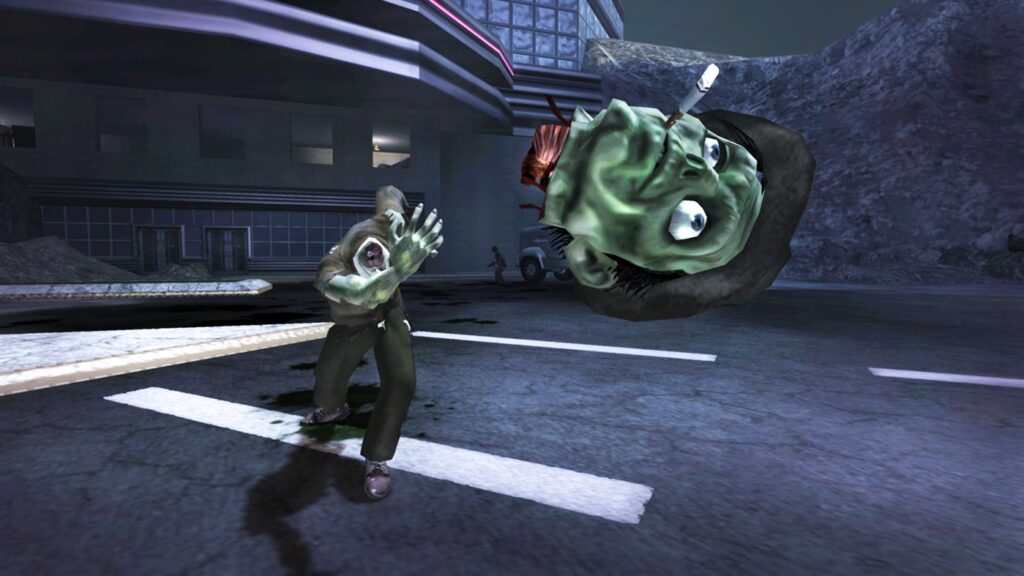
Stubbs the Zombie is far from perfect, but it is a flawless guilty pleasure. The remaster could have gone much further with the features and controls. Taking the local multiplayer features to the next level and incorporating deathmatch style gameplay modes should have been obvious since this used so much from Halo.
There are so many useful abilities and options in the game’s versatile engine, that it seems wasteful that the main game is so lean. Sadly, there is also no replay value. This is a one and done experience: no stats are tracked, no rankings, and no unlockables other than a terrible mini game. For $19.99 USD, there is just barely enough meat on this bone to satisfy.
Stubbs the Zombie Rebel Without A Pulse is a cult game incarnate. From the offbeat premise and crass sense of humor, to the low budget presentation and likable protagonist; it is the kind of game that is hard to dislike because of how quirky it is.
Stubbs the Zombie in Rebel Without a Pulse was reviewed on Xbox Series S using a code purchased by Nichegamer. You can find additional information about Niche Gamer’s review/ethics policy here.